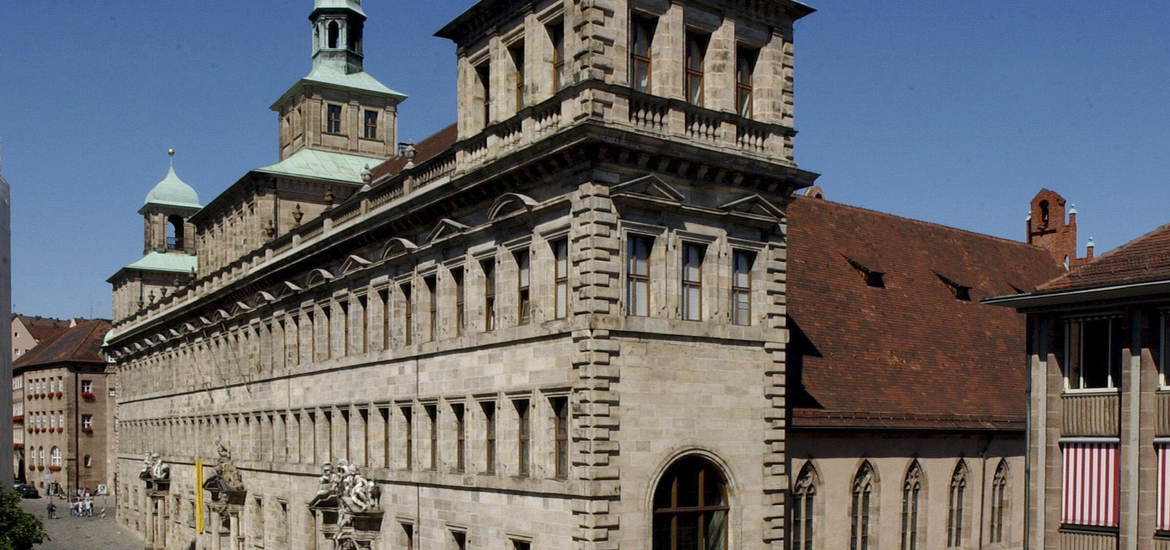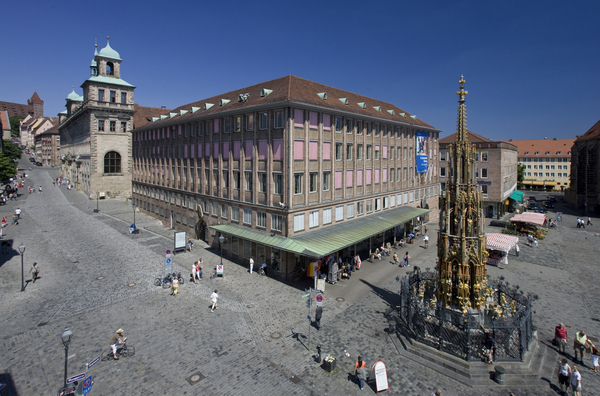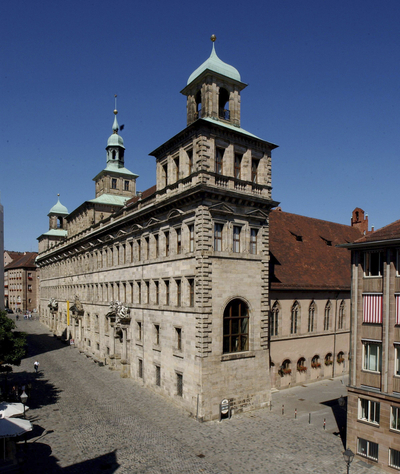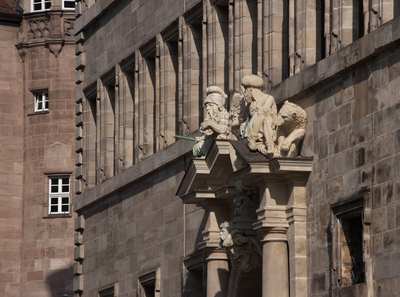Old Town Hall
Rathausplatz 2, 90403 Nürnberg
In 1520, Albrecht Dürer and W. Pirckheimer established the iconography for the painting of the walls. The end of the Thirty Year's War was celebrated here with a Peace Banquet in 1649. Beneath the great hall are dungeons which testify to the nature of medieval justice and can be visited.
In the years 1616 - 22, the town hall was extended by Jakob Wolff. His plan for a palazzo-like building reflects the influence of the Italian Renaissance. In the facade, the regularity of the window zones contrasts with the three Baroque portals, the central one of which bears the imperial eagle and the city's two coats of arms.
The entire complex was destroyed by bombs in 1945. Reconstruction, 1956 - 62. Replicas of some of the medieval imperial regalia may be seen in the "Ehrenhalle"(ground floor).
Key facts:
- one of the most important buildings in Nuremberg
- the magnificent city council chamber is an example of the mastery of Gothic architecture
- the council chamber once featured paintings based on sketches by Albrecht Dürer, who also supervised the work
- the Medieval Dungeons of Nuremberg are located in the cellar of the Historical City Hall


